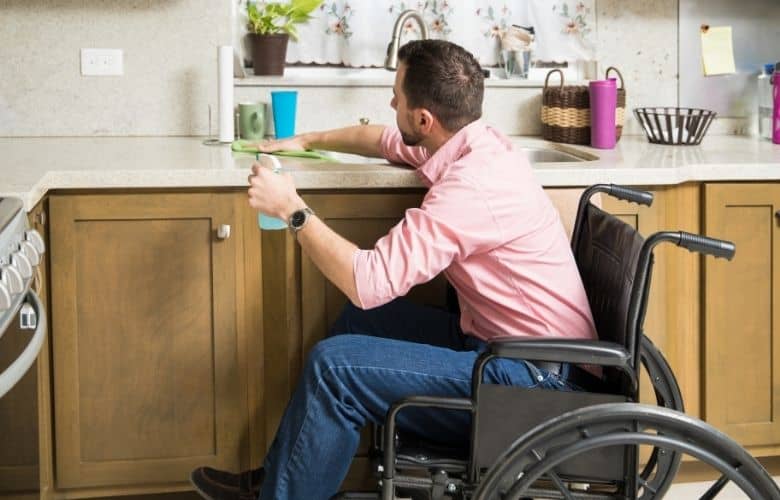Creating a home that is accessible to everyone is not just a trend but a necessity. ADA-compliant shower designs are crucial in ensuring that people with disabilities or limited mobility can live comfortably and independently. In this article, we will explore everything you need to know about ADA-compliant shower designs, from the basic guidelines to the latest trends and innovations.

Understanding ADA Compliance
The Americans with Disabilities Act (ADA) sets standards to ensure accessibility for people with disabilities. In the context of home design, ADA compliance means creating spaces that are usable by individuals with various physical needs. This includes features like grab bars, seat options, and appropriate shower dimensions.
Why ADA-compliant Shower Designs Matter
ADA-compliant shower designs are essential because they provide safety, comfort, and independence for individuals with disabilities. These designs minimize the risk of falls and injuries, making daily routines more manageable for everyone living in the home.
Safety Features
Safety is a top priority in ADA-compliant shower designs. Incorporating grab bars, non-slip flooring, and adjustable showerheads can significantly reduce accident risks. These features are designed to provide stability and convenience for people with mobility challenges.
Comfort and Independence
In addition to safety, comfort and independence are key benefits of ADA-compliant shower designs. With options like built-in seating and hand-held showerheads, individuals can maintain their hygiene routines without assistance, promoting a sense of autonomy.
Key Elements of ADA-compliant Showers
Proper Dimensions
One of the most critical aspects of ADA-compliant showers is the size. The shower must be spacious enough to accommodate a wheelchair or walker, typically requiring a minimum of 36 inches by 36 inches of clear space.
Grab Bars and Handrails
Strategically placed grab bars and handrails are crucial in an ADA-compliant shower. They provide necessary support and balance, making it easier for individuals to move in and out of the shower safely.
Shower Seats
Shower seats are an excellent addition to ADA-compliant designs. They offer a comfortable and stable place for sitting, which is especially beneficial for those who cannot stand for long periods.
Non-slip Flooring
Non-slip flooring is a must-have in ADA-compliant showers to prevent slips and falls. Textured tiles or vinyl can provide the necessary traction, even when wet.
Designing an ADA-compliant Shower
Choosing the Right Materials
When designing an ADA-compliant shower, material choice is crucial. Durable, water-resistant, and easy-to-clean materials like ceramic tiles or acrylic are ideal for creating a safe and functional space.
Incorporating Modern Technology
Modern technology can enhance ADA-compliant shower designs. Features like smart shower controls, which allow users to adjust water temperature and pressure with ease, can significantly improve the showering experience.
Considering Aesthetics
While functionality is paramount, aesthetics should not be overlooked. ADA-compliant showers can be both practical and stylish, incorporating elements like sleek grab bars and modern fixtures to create an inviting space.
Trends in ADA-compliant Shower Designs
Barrier-free Showers
Barrier-free showers, also known as roll-in showers, are becoming increasingly popular. These designs eliminate the need for a threshold, making it easy for wheelchairs and walkers to enter and exit the shower.
Curbless Designs
Curbless shower designs offer a seamless transition from the bathroom floor to the shower area, enhancing accessibility and giving a modern look.
Customizable Options
Customization is a growing trend in ADA-compliant shower designs. Homeowners can choose from various features, such as adjustable showerheads and fold-down seats, to create a personalized and functional shower space.
Cost Considerations
While ADA-compliant shower designs can be an investment, they are invaluable in promoting safety and independence. Budgeting for these features should consider potential savings from preventing accidents and the increased home value from having an accessible bathroom.
Funding and Resources
There are various resources and funding options available to assist with the costs of ADA-compliant renovations. Grants, loans, and tax incentives can help make these essential modifications more affordable.

FAQs
What is the minimum size for an ADA-compliant shower?
The minimum size for an ADA-compliant shower is typically 36 inches by 36 inches of clear floor space to accommodate a wheelchair.
Are grab bars necessary in an ADA-compliant shower?
Yes, grab bars are essential in ADA-compliant showers as they provide support and stability, reducing the risk of falls.
Can ADA-compliant showers be stylish?
Absolutely! ADA-compliant showers can be both functional and stylish, incorporating modern fixtures and design elements to create an inviting space.
For more information on ADA requirements and home accessibility, check out this resource.
Learn more about the emotional impact of aging in place by visiting this article, or explore creating a senior-safe hobby room here.
For those considering home modifications versus assisted living, this guide can be helpful.
This article contains affiliate links. We may earn a commission at no extra cost to you.

